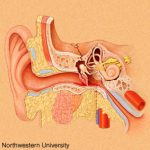Everybody knows that smoking is bad. But how often have you stopped by to see one of your trauma patients and have been told “they’re out smoking?” Well, it turns out it’s bad for their injuries as well.
A German group looked at the effects of smoking on healing of a “simple” tibial fracture. They looked at 103 patients who underwent treatment for an isolated tibial shaft fracture at a trauma center. Patients with more complicated problems like extension into a joint, open fracture (Gustilo III), or significant soft tissue injury were excluded.
Patients were divided into non-smokers and smokers (including previous smokers). A total of 85 patients were studied, and there were roughly half in each group. The nonsmoking group experienced no delayed or non-unions of their fractures. The smoking group reported 9 delayed unions and 9 non-unions in 46 patients! As expected, time off work and eventual functional outcome was worse as well.
Bottom line: The exact mechanism for impairment of fracture healing by smoking is unclear. It may be due to physiologic effects of inhaled tobacco components on blood flow, blood vessels, transforming growth factor levels or collagen formation. It could also be a secondary effect of socioeconomic variables, patient compliance, or a host of other factors. Regardless, it’s bad. Smoking should be forbidden while in hospital, and should be strongly discouraged after discharge.
Reference: Cigarette smoking influences the clinical and occupational outcome of patients with tibial shaft fractures. Injury 42:1435-1442, 2011.



